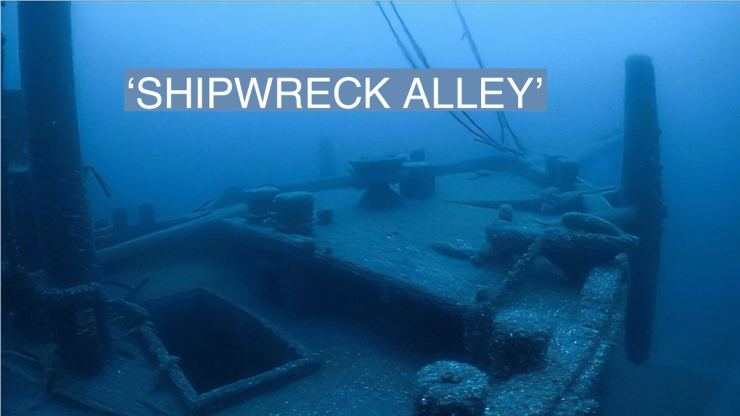The News
A nearly 130-year-old shipwreck was discovered deep in Lake Huron, identified as the Ironton schooner that sank after a collision with a wooden freighter, killing five crew members.
The ship was found in Lake Huron’s deadly “Shipwreck Alley” in 2019 but the findings were not revealed to the public until Wednesday to give researchers time to study the wreck, one of an estimated 6,000 ships that have sank in the Great Lakes.
The Ironton was “magnificently preserved,” researchers noted, with a lifeboat still attached to the ship’s stern, confirming the story of the 1894 disaster’s two survivors who said the rope on the boat had not been untied.
In this article:
Know More
The Great Lakes have a long history of swallowing ships whole. The climate makes them prone to storms, and the resulting surging waves can be strong enough to sink vessels. Long a cargo passage, barges and shipping vessels have crossed the lakes since at least the seventeenth century.
These ships are generally well-preserved, due to the cold conditions deep within the lakes. Because the lakes are bodies of freshwater, salinity does not eat away at the ships’ structure, meaning they decay more slowly than those that sink in the ocean.
Famous Wrecks
The Edmund Fitzgerald
A fairly recent wreck, the Edmund Fitzgerald sank in Lake Superior in 1975, the largest ship to ever sink in the Great Lakes. The entire 29-person crew was killed after a November storm caused gale-force winds, damaging integral parts of the freighter. The disaster inspired a Canadian folk song, released the following year: Gordon Lightfoot’s The Wreck of the Edmund Fitzgerald.
The Lady Elgin
The Lady Elgin sank in Lake Michigan in September 1860, killing an estimated 300 passengers, mostly members of an Irish militia. The wreck was caused by a collision between the Elgin and a Canadian schooner. The schooner’s captain didn’t realize how much damage was done to the Elgin, and left the area shortly after the crash. The Lady Elgin broke apart, sinking in about 20 minutes.
Quoteworthy
“We have not only located a pristine shipwreck lost for over a century, we are also learning more about one of our nation’s most important natural resources — the Great Lakes,” said Jeff Gray, superintendent of the Thunder Bay National Marine Sanctuary. “This research will help protect Lake Huron and its rich history.”
Notable
- In the Ontario-based publication The Hamilton Spectator, contributing writer Craig Wallace details how his great-uncle was lost in a 1940 wreck on the Great Lakes. Like others, the Anna C. Minch was trapped in a storm, and all of the crew were killed.


